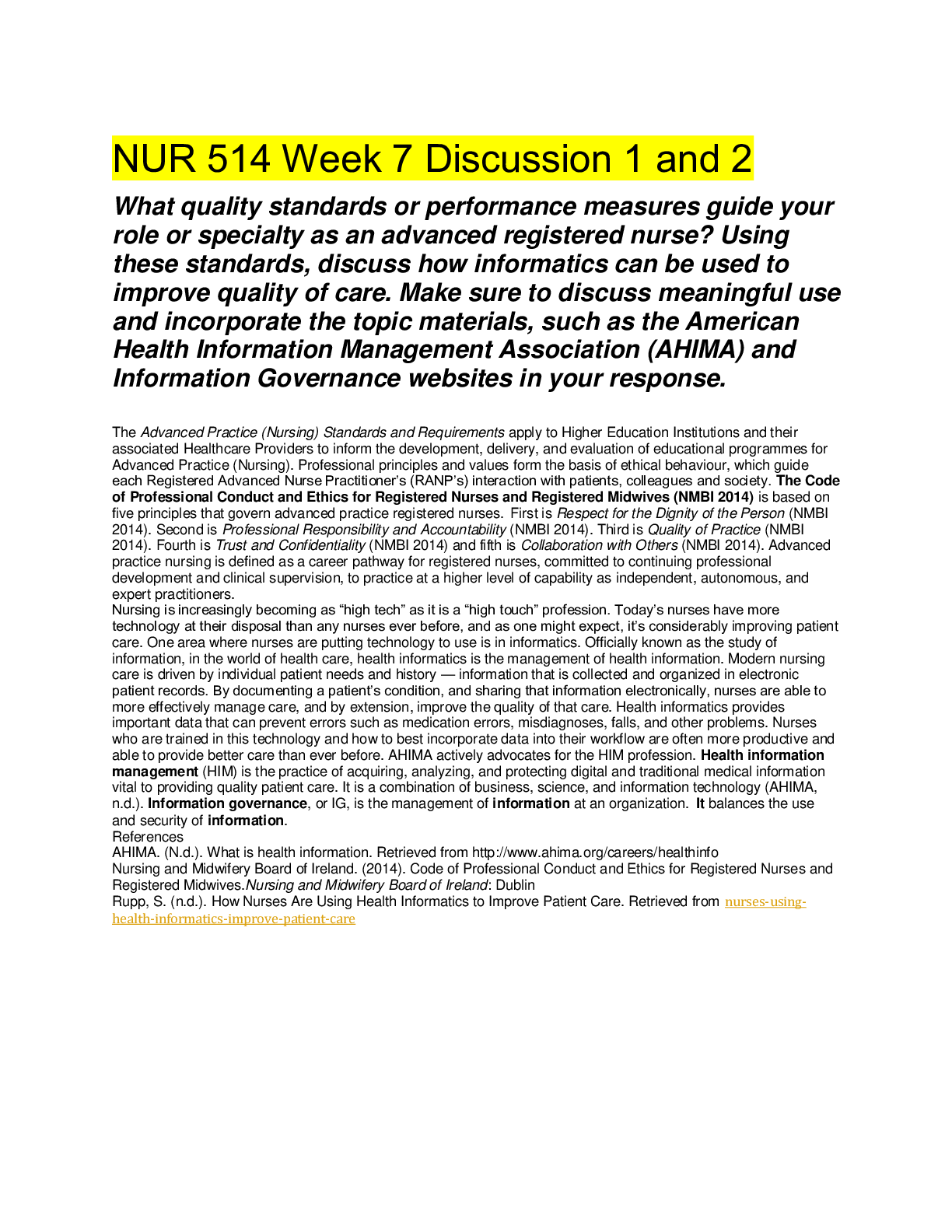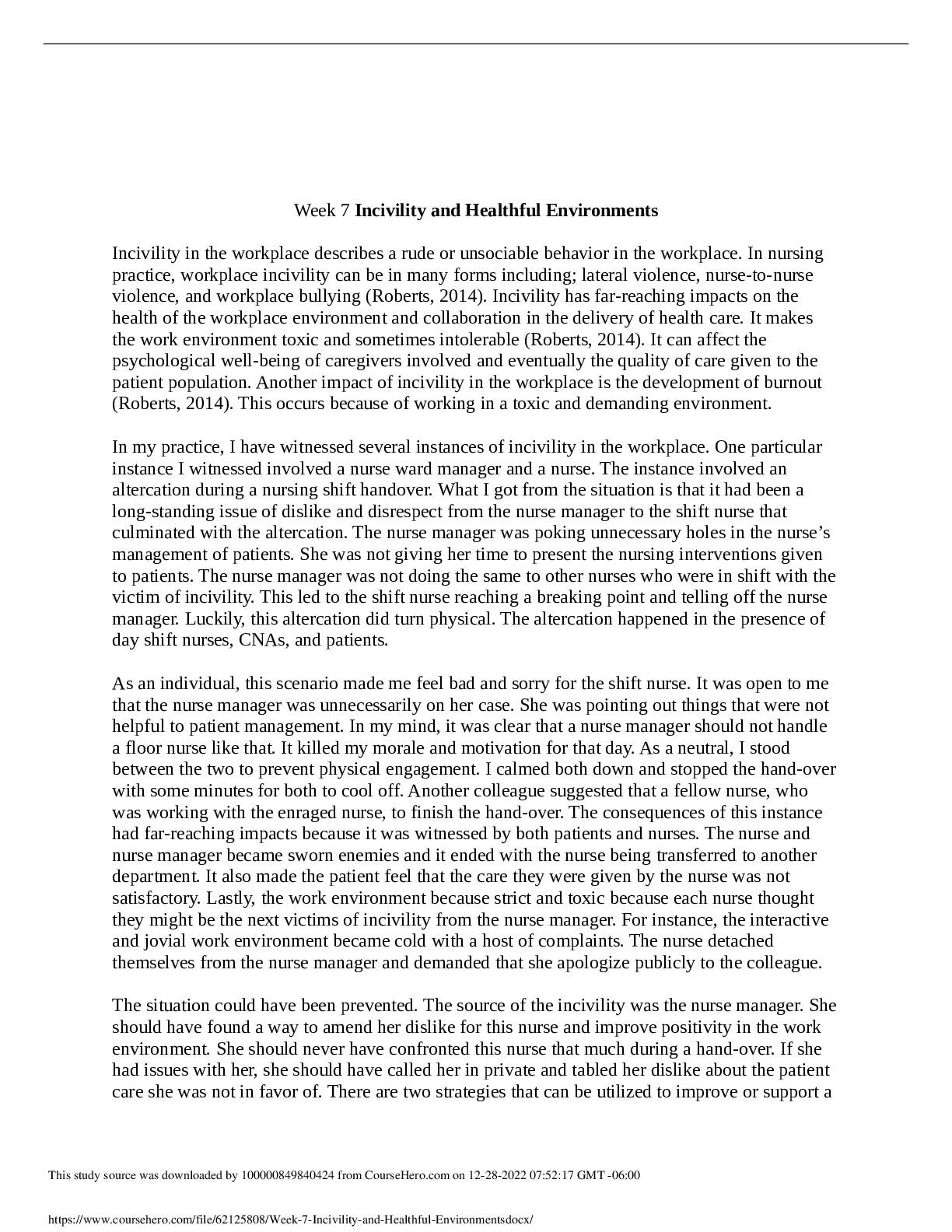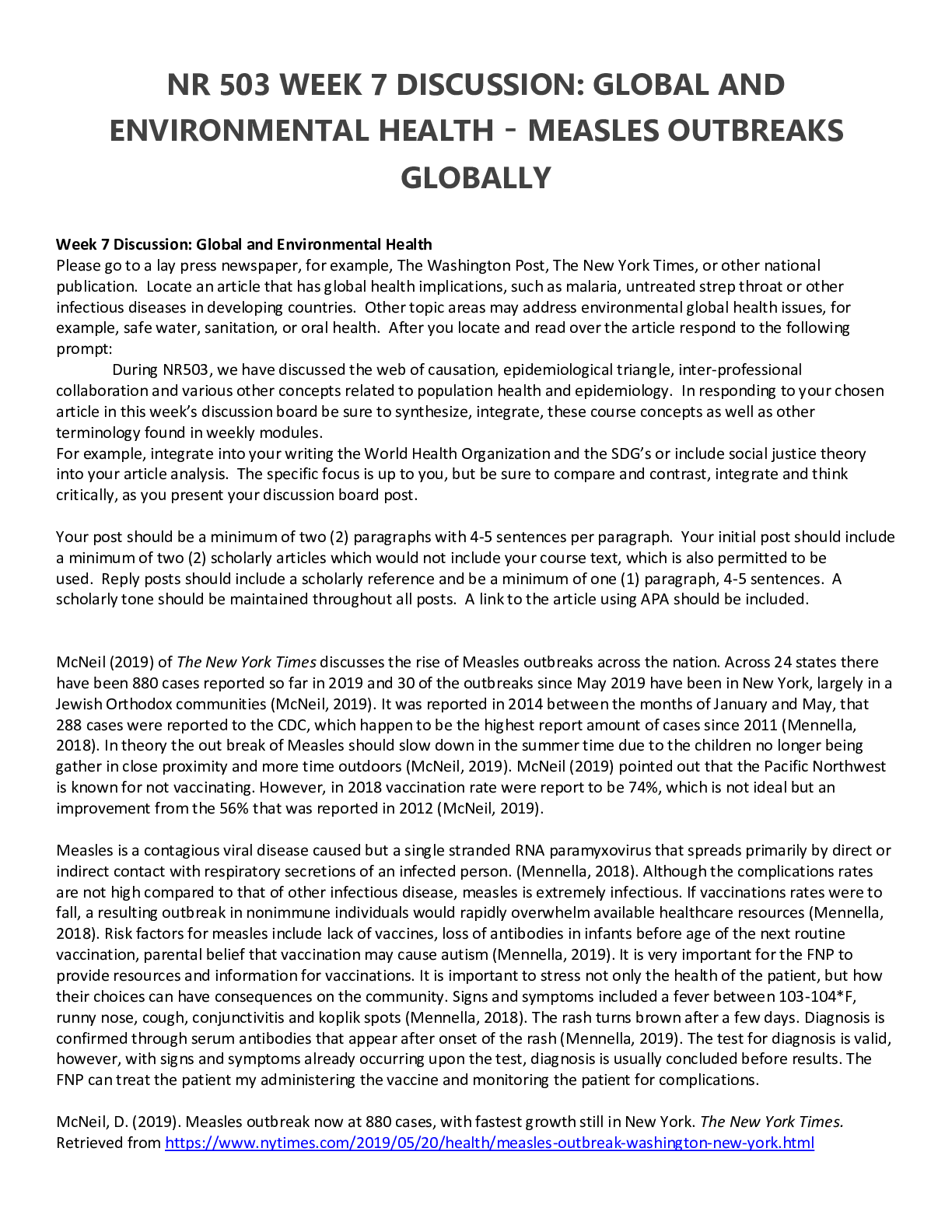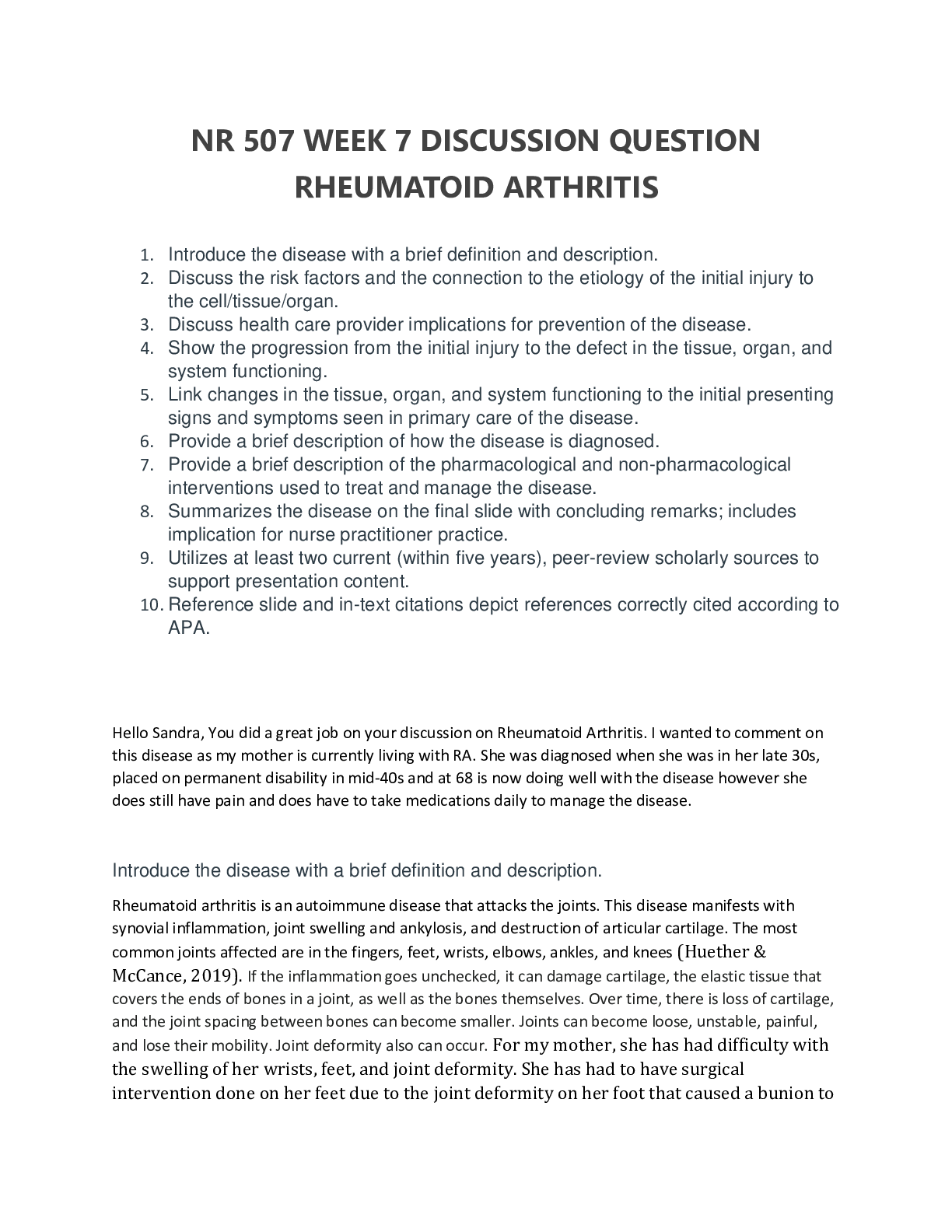*NURSING > DISCUSSION POST > NR 391 Week 7 Discussion Question: Workforce Diversity | Already Graded A+ (All)
NR 391 Week 7 Discussion Question: Workforce Diversity | Already Graded A+
Document Content and Description Below
NR 391 Week 7 Discussion Question: Workforce Diversity Discussion 7 As nurses, we often work with physicians or other healthcare team members whose native language is not English. In fact, som... e of you may have interviewed a non-native English speaker for your Course Project. a. Share an example of miscommunication that has occurred as a result of this disparity. b. Reflect on your new-found knowledge of transcultural nursing, and describe how this miscommunication could have been prevented. Miscommunication is present everywhere in the world. It can be found at the work place and mostly it happens due to the differing perceptions between people. Lack of communication is often caused by making assumptions. Miscommunication due to a language barrier is a common issue due to the diversity in the world. I currently work a nephrologist from Algeria. He is an excellent doctor that is always on the move and is constantly spread thin. He has an accent which is extremely thick and many of the nurses have a very hard time understanding him. It is extremely important to clearly communicate with co-workers and doctors as well as with the patients themselves. We need to take the time to gather all the necessary information, insure that we have a clear understanding of what is being asked or stated as this can play a very big role in the final outcome. I really struggled with trying to find a specific instance where I had a miscommunication that occurred as a result of a disparity. Although I don’t have a specific instance, I would like to touch upon working with a colleague that has a language barrier who is a nephrologist from Algeria. This doctor is always on the run, like many. He is notorious for telling the nurses he is too busy to put the dialysis order into the computer due to having so many patients to see. He is well aware that it is a hospital policy that all orders are to be placed into the electronic medical record (EMR) as no written orders are allowed. The hospital prefers that verbal orders are used only when the doctor are not onsite or do not have access to the EMR. Many of the staff struggle with communicating with him as they find him very difficult to understand. With his very thick accent and his struggle to find the appropriate words when he sees that someone is not following becomes frustrating for all parties I do believe that there are many barriers that we face in communication whether it is a doctor, patient or a colleague. Other barriers such as fear, education, experience gaps and stress can add another layer of possibly miscommunication. It is important to determine the barriers and define ways to remove the barriers will be key. With this specific doctor, there were a few barriers identified. One, language and two, fear. Not only did the nurses struggle with understanding what he was trying to say but they also were fearful of him as they did not feel that they could approach. Organizational culture is another form of culture that may assume a significant part in shaping our experiences in the work place (Chamberlain College of Nursing, 2018). We as a team needed to address these important issues so that we could avoid miscommunication, misunderstanding, possible misdiagnosis and or medication errors along with making the team more cohesive.. I met with this doctor and had a very candid conversation on how our team was working and what improvements we could make. We discussed the barriers that the nurses were facing. The doctor did not realize the impact these barriers were having on the team. Our group has learned that it is important that we understand what the doctor is trying to convey. Many times we repeat the discussion back to the doctor to ensure that we are on the same page. Organizational culture affects not only people working in the institution, such as employees, physicians, and volunteers, but also those who access the institution’s services, such as clients, families and community members (Andrews & Boyle, 2016, p. 41). Andrews, M. M., & Boyle, J. S. (2016). Transcultural concepts in nursing care (7th ed.). Philadelphia: PA. Wolters Kluwer. Chamberlain College of Nursing. (2018) Lesson Week 7 [Show More]
Last updated: 1 year ago
Preview 1 out of 2 pages
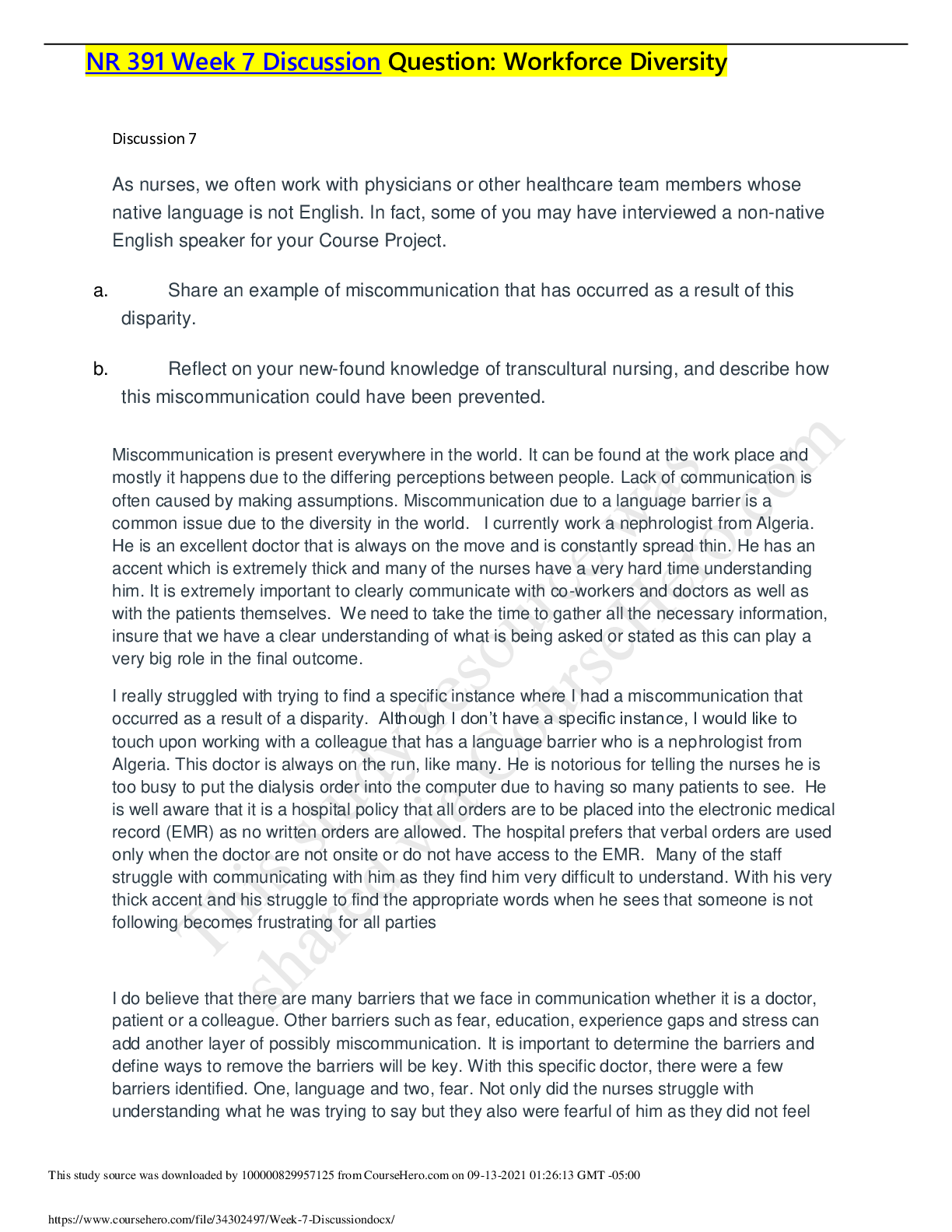
Buy this document to get the full access instantly
Instant Download Access after purchase
Add to cartInstant download
We Accept:

Also available in bundle (1)
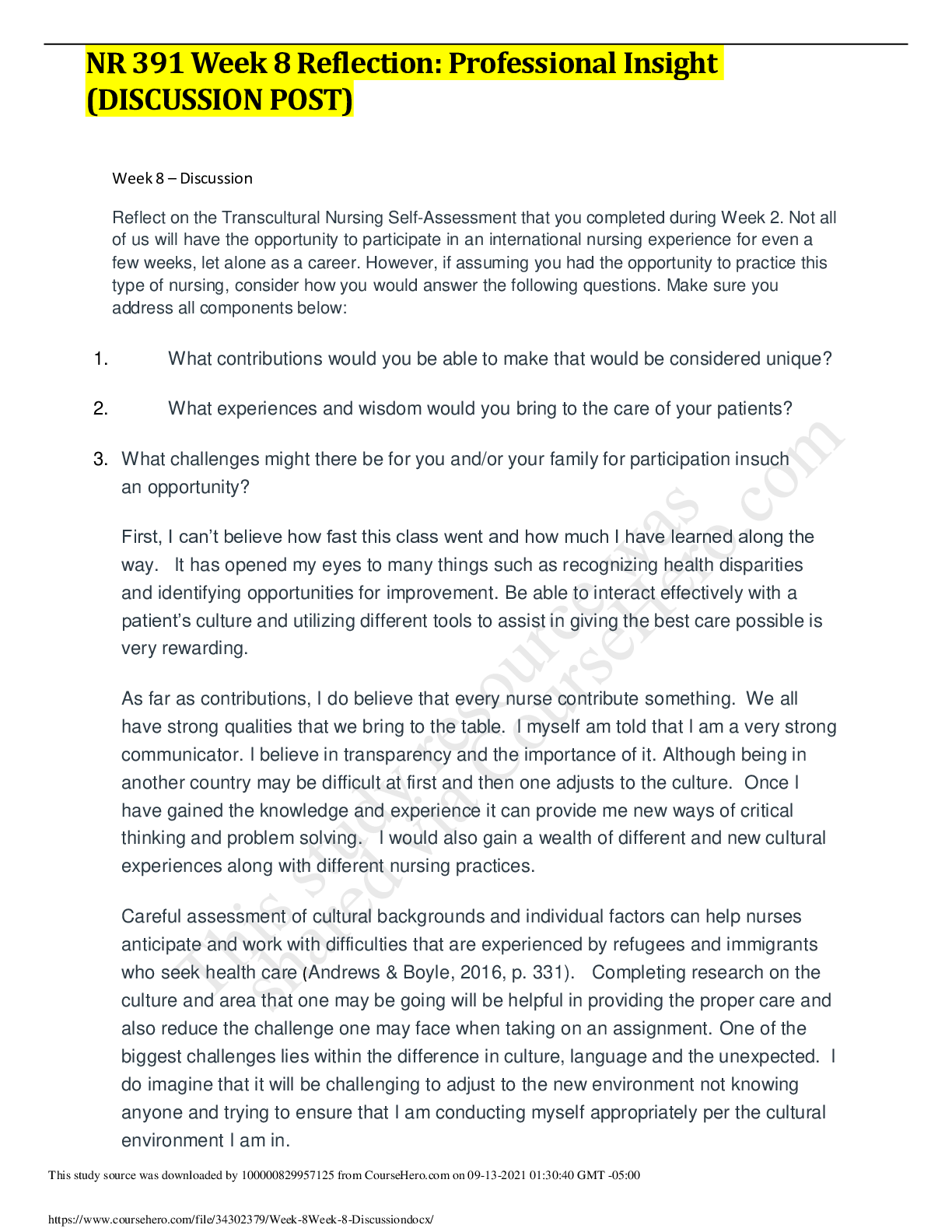
NR 391 Transcultural Nursing (NR 391 Complete Coursework Week 1 – 8) BUNDLE | 100% VERIFIED PAPERS.
NR 391 Transcultural Nursing (NR 391 Complete Coursework Week 1 – 8) BUNDLE | 100% VERIFIED PAPERS.
By Goodluck Academia 2 years ago
$14
11
Reviews( 0 )
$8.00
Document information
Connected school, study & course
About the document
Uploaded On
Sep 13, 2021
Number of pages
2
Written in
Additional information
This document has been written for:
Uploaded
Sep 13, 2021
Downloads
0
Views
57


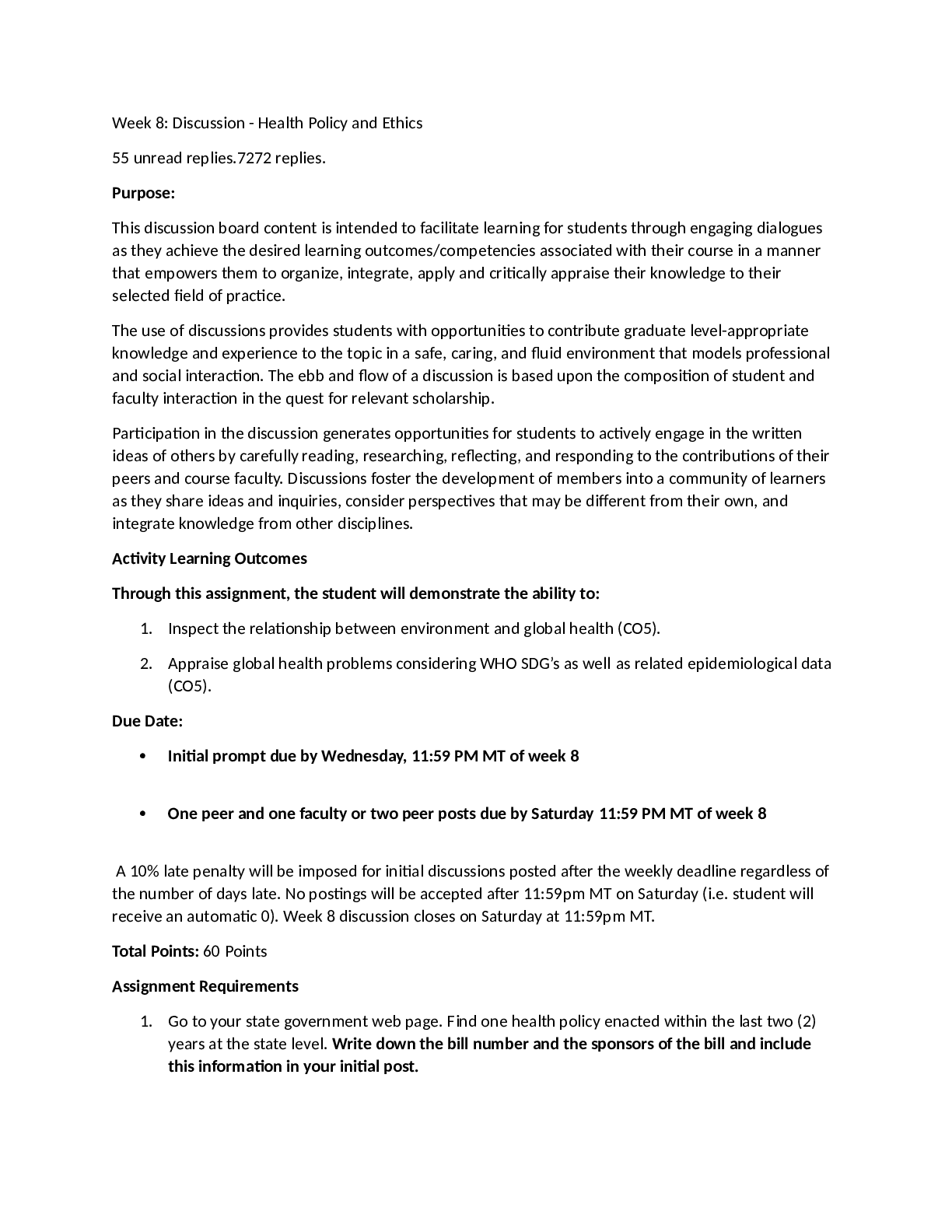
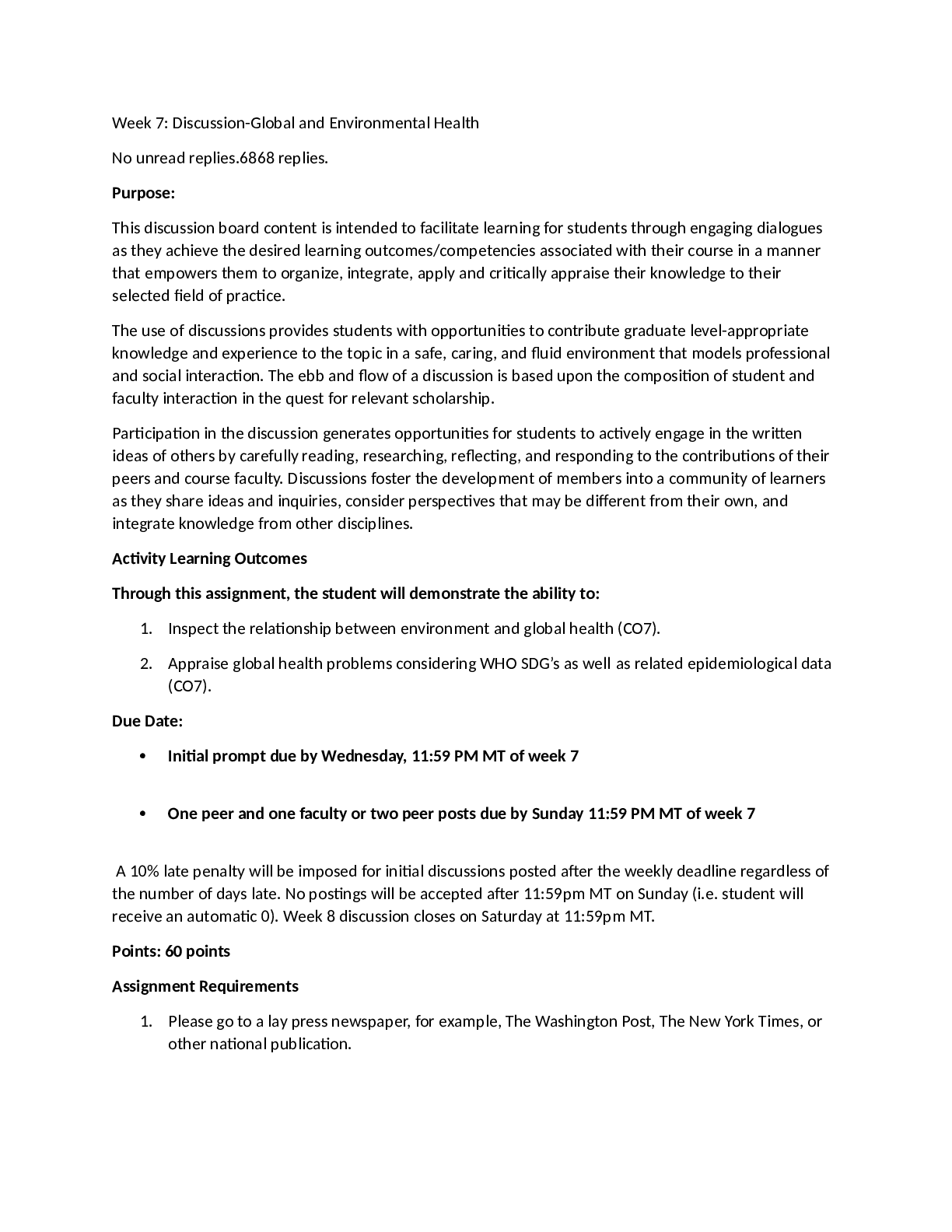


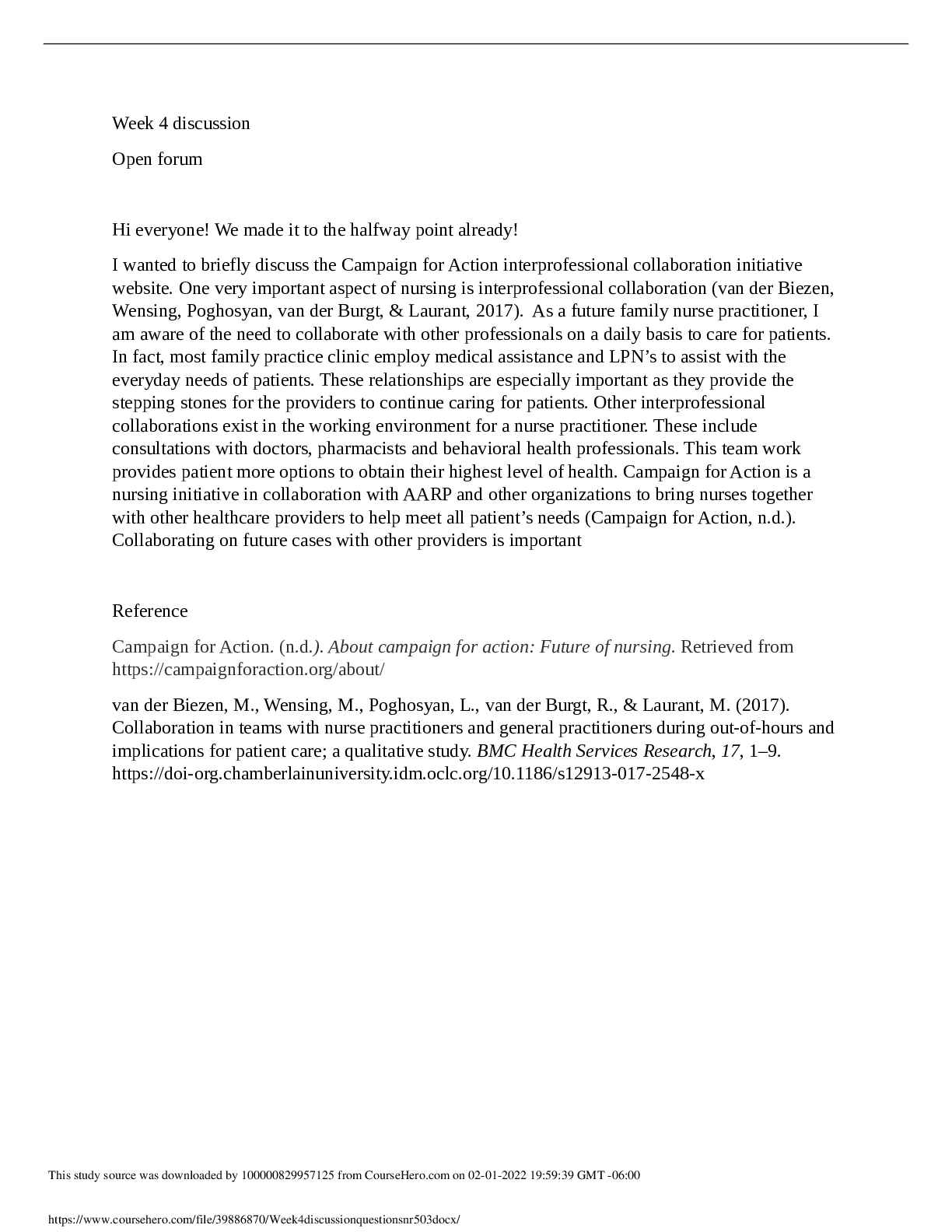

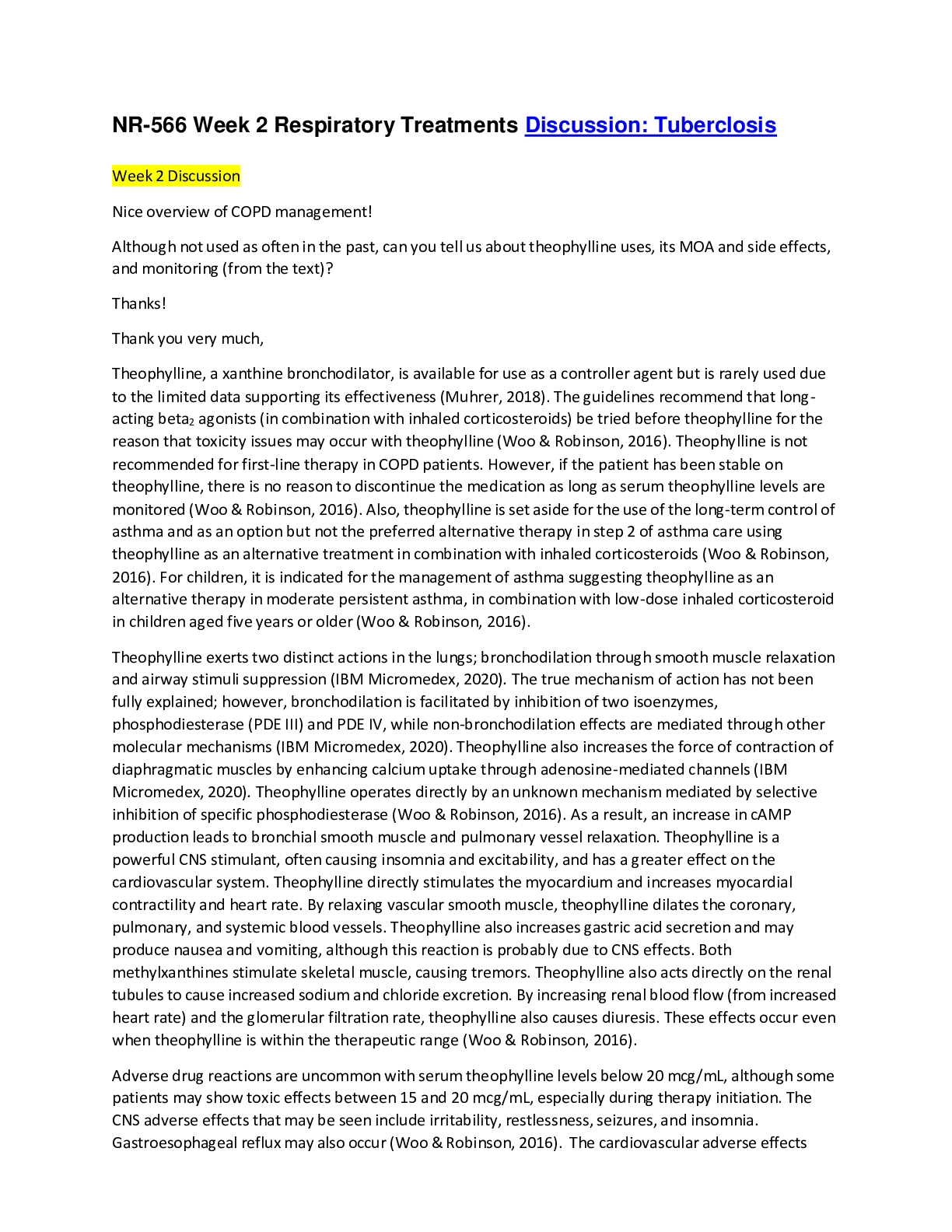
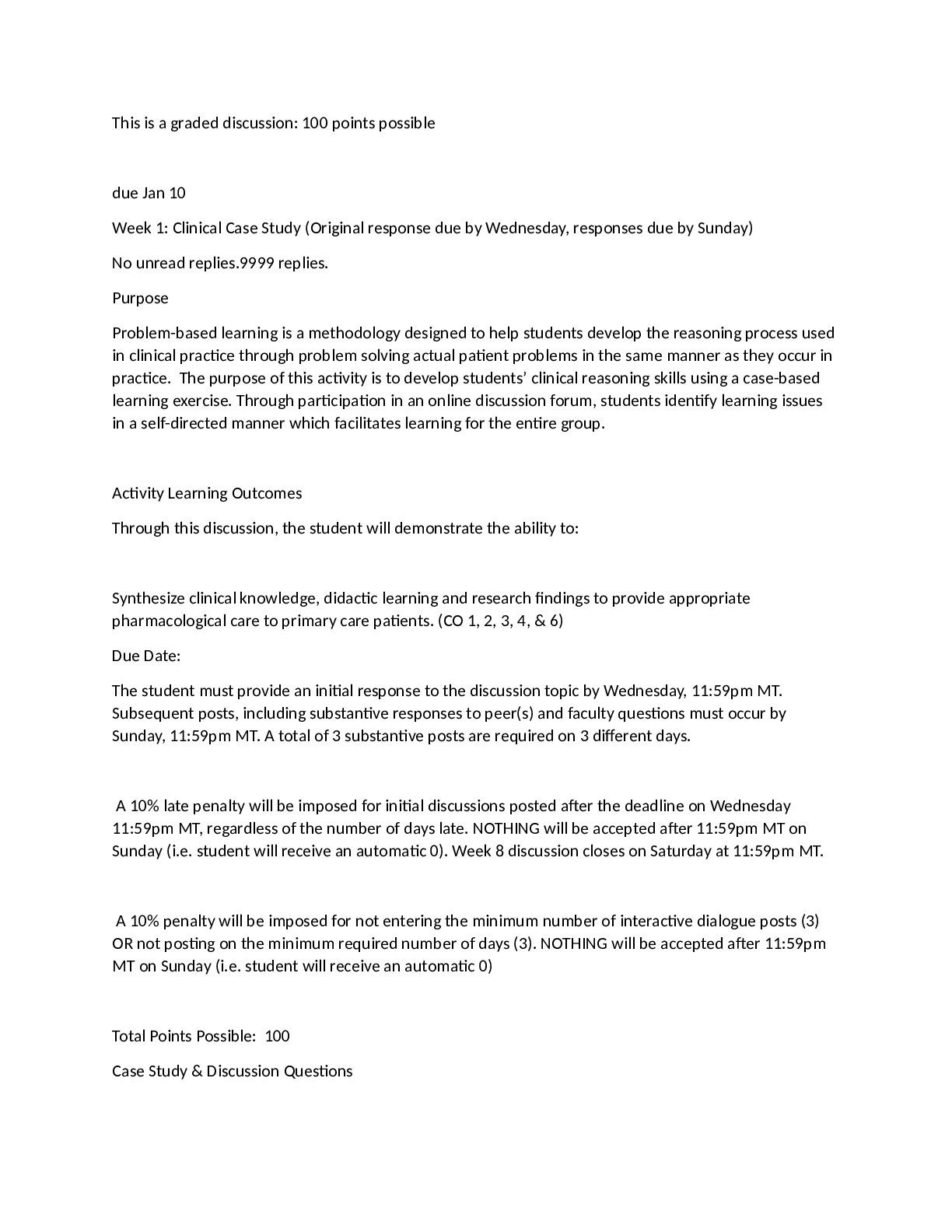
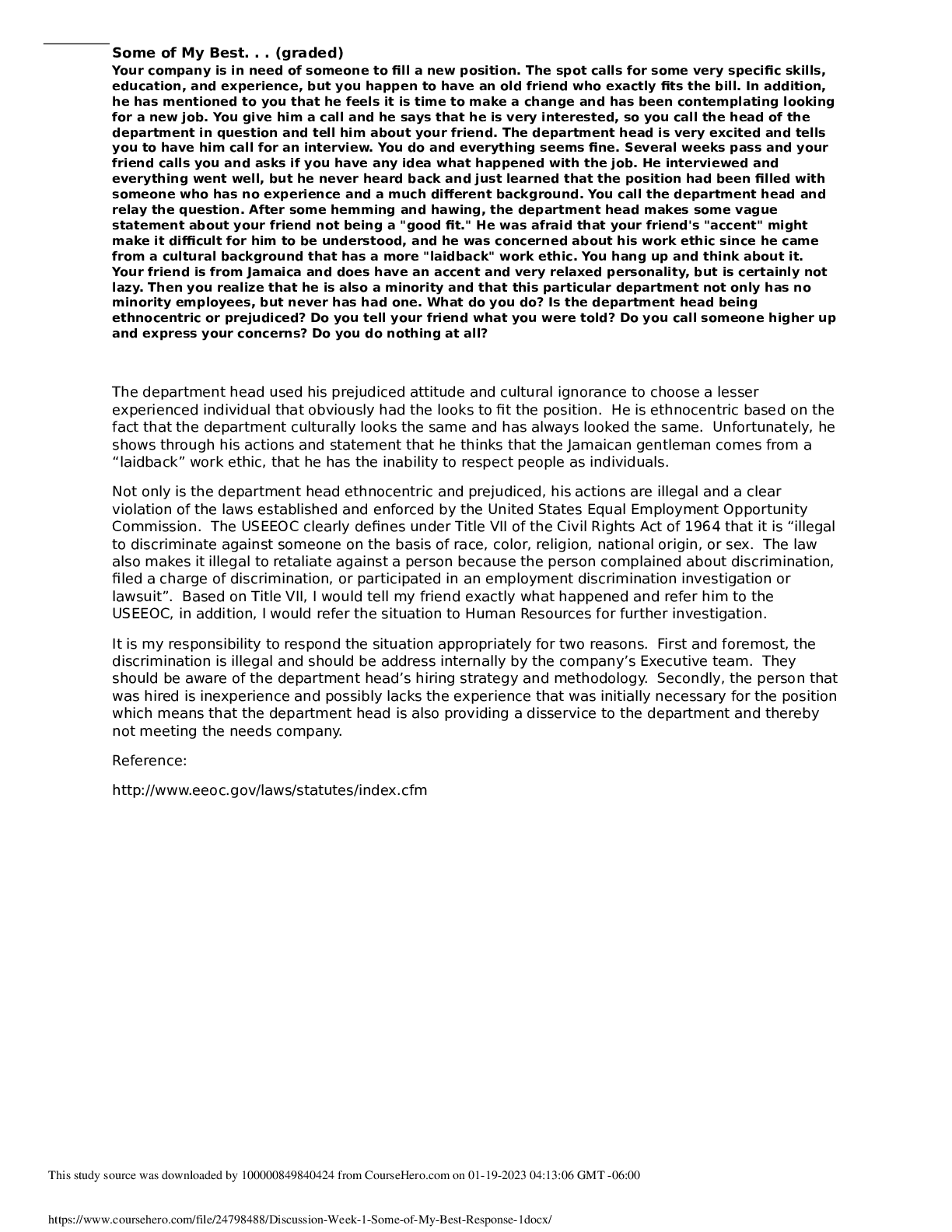


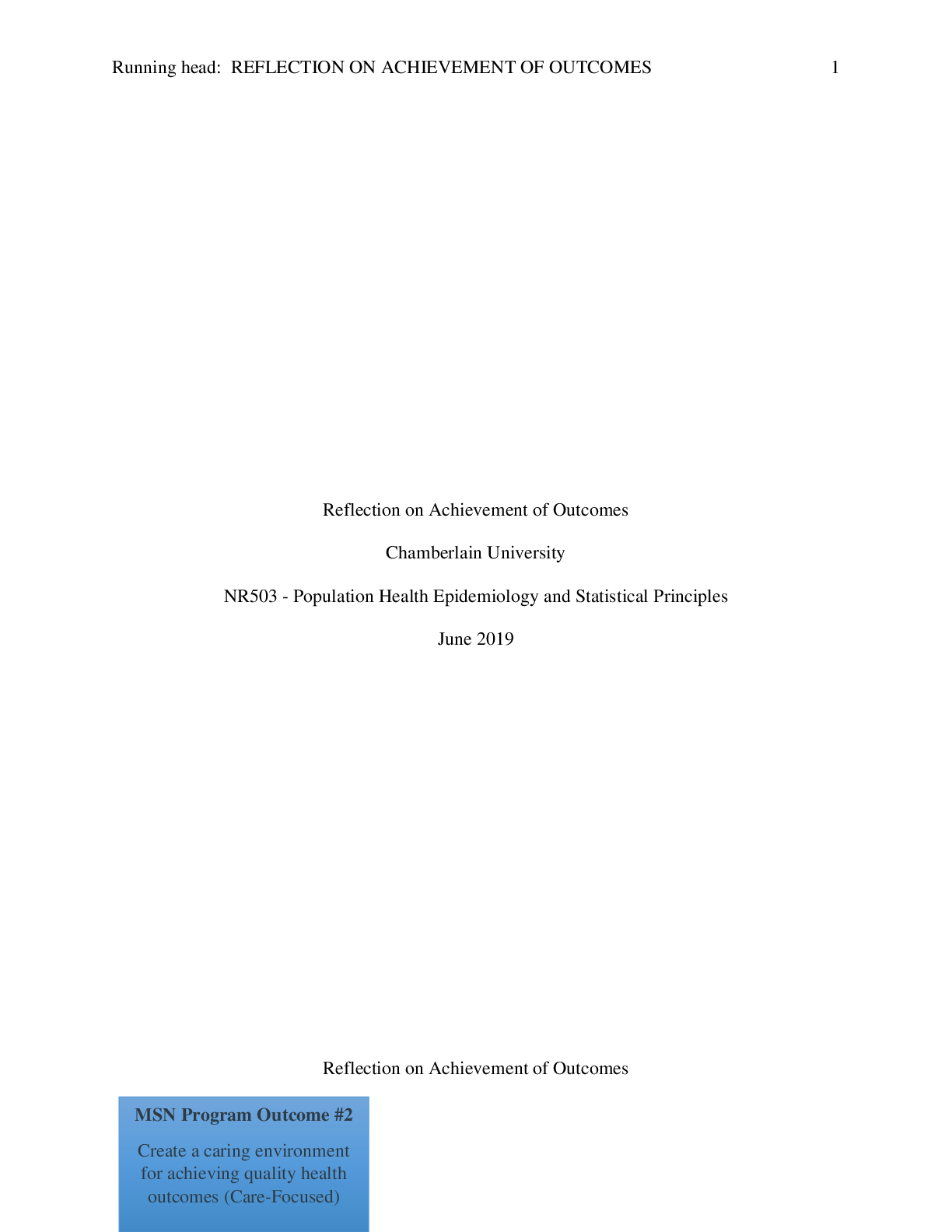

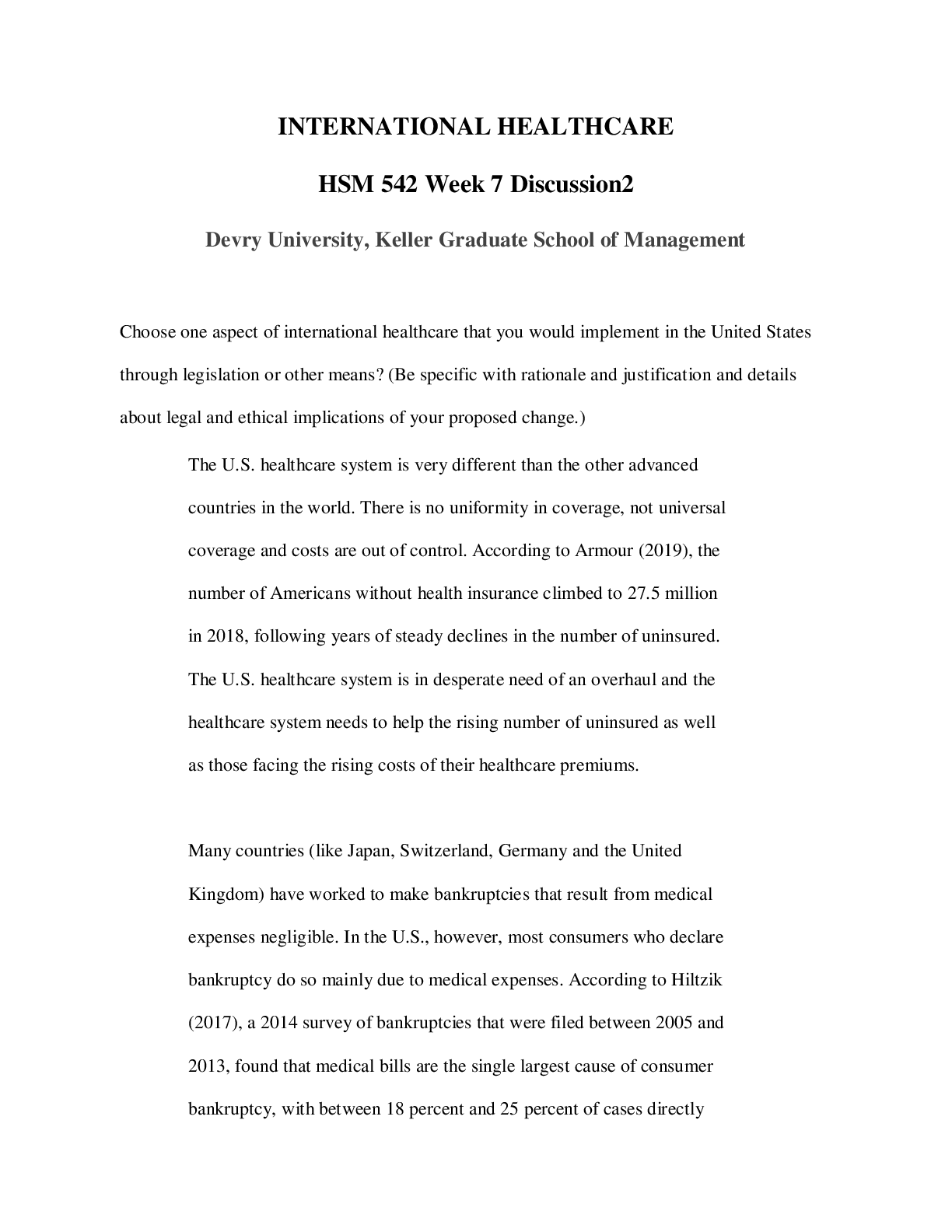
 – South Carolina State University.png)


